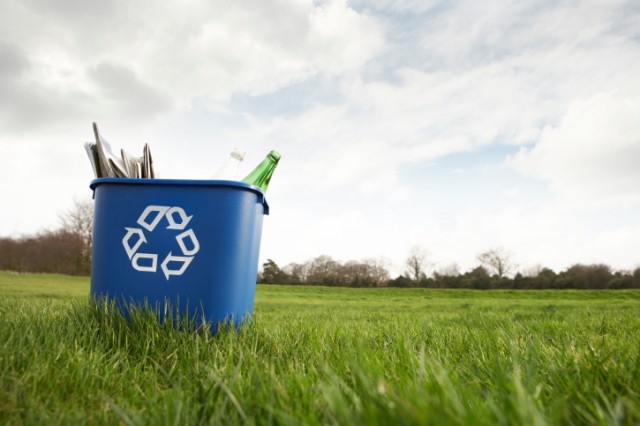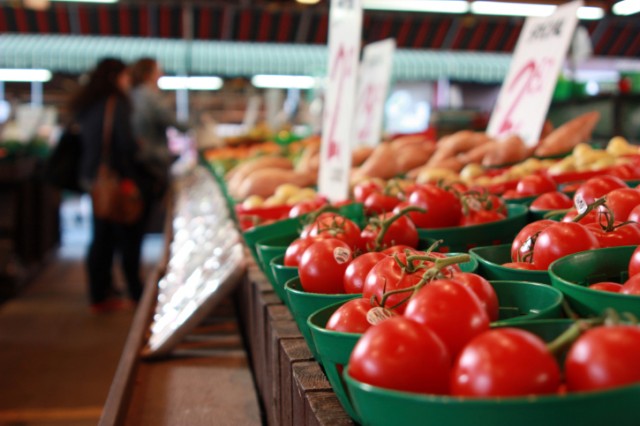There are plenty of easy choices you can make that will both save money and be better for the world.
Small changes in your day-to-day life can make a huge difference by reducing waste, pollution, and greenhouse gas emissions, in addition to contributing to energy efficiency. Even if we look solely at saving money and energy in the home, between cooling, heating, lighting, appliances, water heating, electronics, windows, and roofing, there are countless green tips worth trying.
Here are 40 ways to save money while you save the environment.
1. Recycle
More than three-fourths of Americans recycle paper, plastic, or glass from home, making it one of the more common ways Americans look out for the environment.

Source: Thinkstock
2. Compost
Backyard composting is a great way to reduce the amount of garbage you produce and make an excellent (and free!) fertilizer for your garden. Some cities offer composting facilities as well.
3. Buy used items
Buying used products is not only cheaper, it helps cut back on waste. Take advantage of local thrift stores.
4. Repair stuff
Many of today’s electronics and appliances are not made to last more than a few years, but if you can, perform small repairs to lengthen the life of these products.
5. Buy well-made products
Sometimes buying more expensive, high-quality products is a worthy investment. Plus, it will mean less waste in landfills if you buy a product once rather than every year.
6. Get stuff for free
Most communities have a FreeSharing group of some sort to help people recycle unwanted items. The Freecycle Network has more than 7.1 million members worldwide. Neighborhood junk days are also a good opportunity to rescue used items. Sharing goods with neighbors, such as power tools, snow blowers, and appliances, reduces waste and saves money, too.
7. Rent instead of buy
You might be surprised at all the items that can be rented, from tools and camping gear to caskets.
8. Borrow from libraries
Instead of buying books and media, you can utilize your local library for free and save paper and other materials in the process.
9. Bring your own bag
Los Angeles County is one of many communities with an ordinance requiring that shoppers bring their own bags, otherwise stores will charge $0.10 per bag. The LA ordinance has resulted in a 90% reduction in single use bag usage.
10. Bring a reusable water bottle
One of the most wasteful forms of packaging is water and soda bottles. Drink free water instead.
11. Buy local and organic
Depending on where you live, buying local organic foods can be expensive, but it keeps money in the local economy. Eating plenty of organic, wholesome produce will also keep you healthy and thus save on health care costs.

Source: Thinkstock
12. Eat less meat
As meat prices continue to climb, keep in mind that approximately 15% of greenhouse gas emissions come from farming livestock, particularly cows, according to a 2013 report from the Food and Agricultural Organization of the United Nations. The meat industry also accounts for a huge portion of the country’s water usage.
13. Stop eating out
Eating at restaurants can make a significant dent in your budget. If you commit to preparing nearly every meal at home, you’ll also pay more attention to the ingredients.
14. Make your own cleaning supplies
Low-cost items like vinegar, baking soda, and lemon juice make for effective and eco-friendly homemade cleansers.
15. Use rags and cloth napkins
Instead of going through paper products like crazy, use washable cloth napkins, which are easily made at home from old clothing or fabric, and use worn-out rags for cleaning.
16. Sign up for paperless billing
Paperless billing is one of the easiest ways to reduce waste. You can save trees with one click.
17. Stop junk mail
No one likes junk mail, but everyone seems to like complaining about it. You can opt out of unsolicited junk mail by visiting DMAonline.org.
18. Use both sides of computer paper
Make that expensive printer paper go further by using the flipside when possible.
19. Recycle electronics
Keep cell phones, computers, and other electronics as long as possible (even if it means delaying your free upgrade). Then donate or recycle. According to the EPA, recycling 1 million laptops saves energy equivalent to the electricity used by more than 3,500 U.S. homes in one year.
20. Unplug appliances and chargers
Leaving chargers and appliances plugged in when you are not using them still uses electricity. Get into the habit of unplugging them, or get a smart power strip that senses when appliances are off and cuts “vampire” energy use.
21. Set your thermostat to a reasonable temperature
The same goes for your water heater. This is one of the simplest ways to cut monthly costs.

Source: iStock
22. Replace weather stripping
Keeping your windows and doors insulated saves on utility bills and energy usage.
23. Turn a fan on
Try going without A/C in the summer. A well-made fan might be more effective than you think.
24. Use efficient lightbulbs
Energy Star-certified compact fluorescent bulbs save energy and money on your electric bill. Also, try keeping the lights low in the evening. It will be good for your circadian rhythms.
25. Clean refrigerator coils
Cleaning the coils behind your refrigerator periodically will make it run more efficiently.
26. Solar panels
Solar panels are one of the many things you can rent, so give them a try and see how much energy and money can be saved.
27. Put a brick in your toilet tank
Use a brick wrapped in a waterproof plastic to make any toilet into a low-flow toilet.
28. Get a low-flow shower head
Other water-saving bath fixtures are available to help you use less water. Take shorter showers as well.
29. Use an efficient dishwasher
Modern dishwashers tend to be more efficient than hand washing, and according to the EPA, running only full loads will save the earth 100 pounds of carbon dioxide and save you $40 per year.
30. Wash clothes in cold water
About 90% of the energy used for washing clothes is used to heat the water. Again, running full loads only will save energy.
31. Hang clothes to dry
Install a clothesline in your basement for year-round clothes drying.

Source: iStock
32. Skip fabric softener
Clothes still get clean when you forego the fabric softener and the chemicals that go into it, so try a wool dryer ball instead.
33. Plant drought-tolerant native plants
Especially in dry climates, it’s a good idea to give up the green lawn in lieu of native plants.
34. Plant trees
Strategic planting of trees for shade can reduce air conditioning costs by 15% to 50%, according to the U.S. Department of Energy. You can usually get free trees from utility companies or the Arbor Day Foundation.
35. Grow your own fruits, vegetables, and herbs
A garden means free and nutritious food in exchange for some healthy legwork outside.
36. Collect rain water
Rain water can be used for the garden, laundry, toilet flushing, and more.
37. Drive less
Can you walk, bike, bus, or carpool to work? If not, maybe you can take alternative modes of transportation at least a couple of times per week for certain errands.
38. Drive an efficient car
If you live in a region where a car is a necessity, choose one that gets good mileage, or even a hybrid or electric vehicle.
39. Take care of your car
You can save money, gas, and the environment by keeping your tires at the correct pressure, driving below the speed limit, turning off the car instead of idling, ensuring you aren’t burning oil, and getting regular tune-ups.
40. Educate yourself
There are many, many more ways to help save the planet. Make sure you are getting the most up-to-date information as we learn more about humanity’s influence on the natural world. Read up on the latest ways to minimize your impact, and be creative. Check out the EPA’s website for more information.







0 comments:
Post a Comment